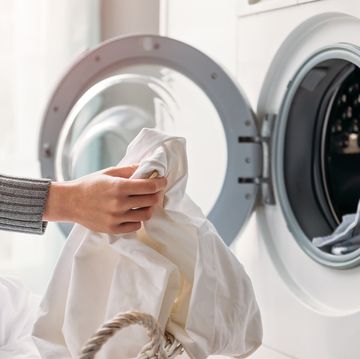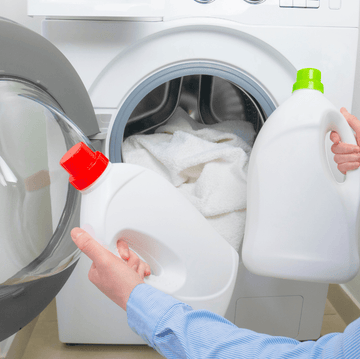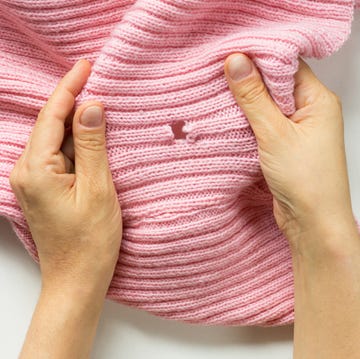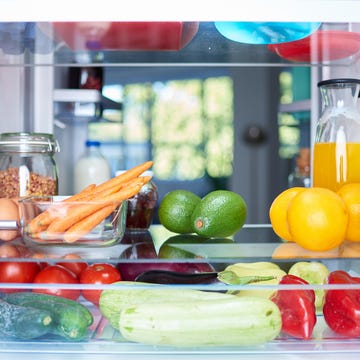Love Good Housekeeping and want more of our Triple-Tested recipes, home tips, fashion inspiration, essential consumer advice and so much more delivered to your inbox? Sign up to our FREE weekly newsletters, sit back and enjoy!
Defrosting the freezer is no one’s favourite chore, but it's got to be done. If the ice inside it gets out of hand, it will impact the freezer’s performance and energy consumption. Not to mention, it’s a complete nuisance whenever you try to slide out a drawer!
When the time comes to defrost your freezer, don’t despair. Here, we cover when, why and how to defrost your freezer, as quickly and easily as possible. Just follow these seven steps to get it looking and working like new...
Why do I need to defrost my freezer?
While it’s all too tempting to put off this chore, you need to take action when you notice the ice getting particularly thick in your freezer; around 3cm thick is the maximum you want. After this, the ice will begin to take its toll on the appliance.
For starters, thick ice in your freezer takes up free space, which impairs how much you can store, while also impacting the air circulation within. If the ice builds up badly enough, it can even prevent the door from closing properly, which again affects the temperatures within, and adds more to your energy bill.
Excess ice will increase the running costs for your freezer in general. "When your fridge freezer doesn't have to fight with frost, the motor doesn’t need to work as hard," says Sarah Heaps, AO’s Freezer expert. "This means it runs more efficiently and is better for the environment, saving you money on your energy bills."
So to keep energy bills to a minimum, you will need get into the habit of defrosting your freezer. Use it as a chance to reorganise the contents and throw away anything older than three to six months (depending on what it is).
How to defrost a freezer
1. Remove the freezer contents, wrapping frozen food in thick layers of newspaper and storing them in a cool bag or a neighbour's freezer.
GHI Tip: Cleaning the freezer on a cold day is easier, as the food that you've taken out will stay cold for longer.
2. Make sure you prepare the area around the freezer as there will be excess water. Push towels around the bottom of the appliance and use baking trays to catch the melting ice.
3. Switch off and unplug the freezer. Leave the door open until the solid ice starts to melt away from the walls and the top of your freezer. Sit a bowl of hot water on a tea towel in the freezer to speed up the process. Replace this as and when it cools.
GHI Tip: Use a plastic spatula to loosen the ice, take care not to damage the elements or internal surfaces. Speeding up the process by blasting the ice with a hairdryer isn't recommended for safety reasons!
4. Take out all of the freezer compartments and allow them to come to room temperature before washing, so that they don't crack. Wash them thoroughly and then allow them to dry before you put them back in the freezer.
GHI Tip: Prise away large chunks of ice with a plastic kitchen tool (which could also be warmed in hot water) — never a knife.
5. Wipe out the fridge or freezer and the shelves and compartments with diluted bicarbonate of soda (15ml/1 tbsp to 1 litre/1 3/4 pints water), applied with a clean cloth, and dry thoroughly. For stubborn stains and grime, a little white vinegar or anti-bacterial spray should do the trick.
GHI Tip: Tackle stubborn areas that are hard to reach with an old toothbrush and a dash of bicarb.
6. Switch on or, if applicable, use the fast-freeze setting. Allow your freezer to run for at least an hour, and the shelves/drawers to air-dry, before filling it. Take note: The Food Standards Agency recommends keeping your freezer at -18°C to keep all items thoroughly frozen.
7. When you put your items back in the freezer, it might be a great opportunity to get everything organised! Be careful not to jam pack it, as air must be able to circulate easily in order to maintain the temperature.
GHI Tip: If you use the top of freezer for storing books, chopping boards or general clobber, it will have to work harder and use more electricity.
Do you need to defrost a frost-free freezer?
Investing in a frost-free freezer can help prevent ice from forming, meaning you don't need to go through this process. However, you should still clean your freezer every six months.




















